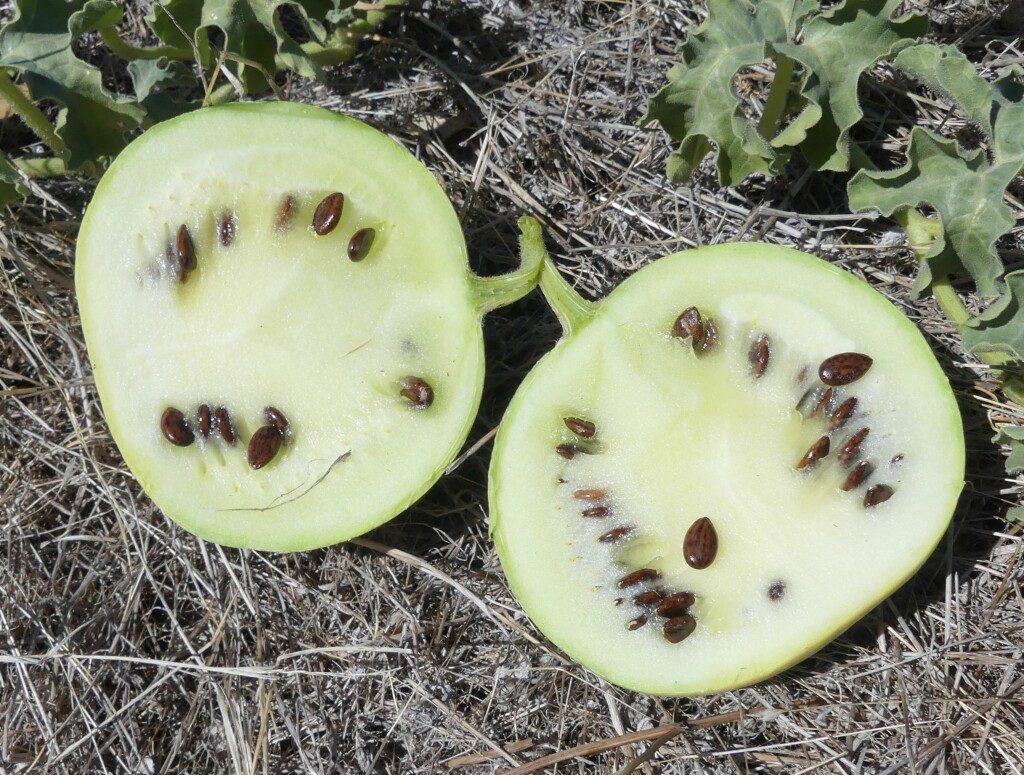Citrullus colocynthis
(L.) Schrad. ColocynthPerennial, trailing herb with tuberous rootstock and scabrous stems. Leaf-lamina 2–4 cm long, 1.5–3 cm wide, palmately to bipinnately 5–9-lobed, the lobes c. ovate, usually pinnately lobulate, scabrous and hairy below, coarsely scabrous above; petiole 1.5–3.5 cm long, scabrous; tendrils simple or 2-branched. Male flowers on pedicels 1–2 cm long; petals 6–8 mm long, greenish-yellow. Female flowers on pedicels 1–4 cm long; petals 6–10 mm long, yellow. Fruit 5–12 cm diam., globose, green mottled with yellow or yellow stripes or all yellow; seeds 5–9 mm long, dull yellowish-brown, smooth. Flowers ?Mar.–May.
MuM, Wim, VRiv, MSB, RobP, CVU, EGL. Naturalized all mainland States. Native to northern Africa and south-west Asia. An uncommon weed of disturbed areas in the far north-west (e.g. Hattah Lakes, Robinvale area).
A number of specimens of C. lanatus tend to grade towards C. colocynthis, especially in the degree of scabrosity of the upper surface of the leaf. However, the margin differences, and seed size and markings, can readily separate these 2 species. Jeffrey (1980) notes that hybrids are known to occur between these species.
Jobson, P.C. (1996). Cucurbitaceae. In: Walsh, N.G.; Entwisle, T.J., Flora of Victoria Vol. 3, Dicotyledons Winteraceae to Myrtaceae, pp. 379–385. Inkata Press, Melbourne.
 Spinning
Spinning



